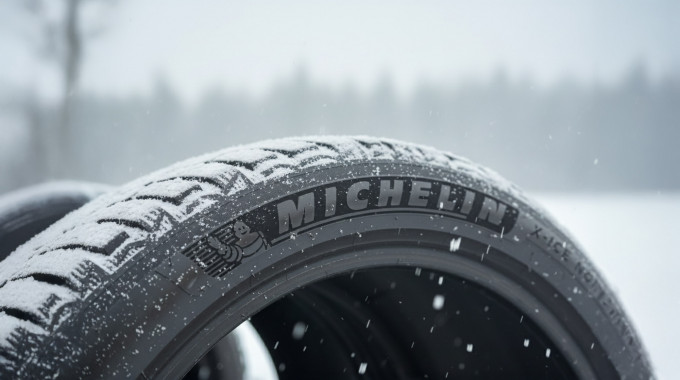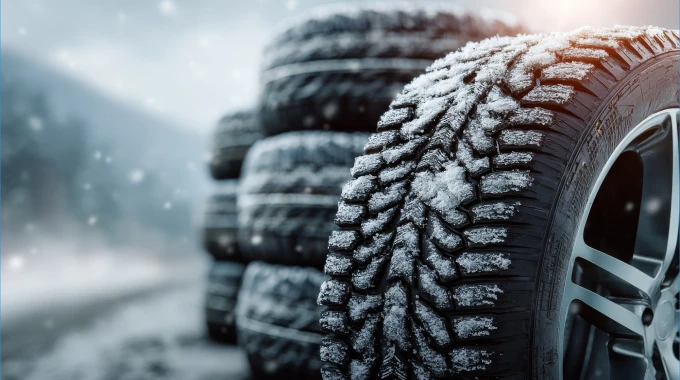
Are you a First Time Car Buyer? Avoid the Headache With These Tips
Shopping for your first car can be intimidating, but there’s a few essential tips, tricks, and tools that can help make the journey a lot easier. This blog post delivers some nuggets of wisdom to save you some headaches and help keep the costs of car ownership to a minimum.
It’s 8.10 am, Monday.
The bus rumbles and sputters up to your stop. You move towards the exit as urgently and politely as you can, pushing through an almost-impenetrable crowd. You barely make it to the door before it shuts.
You hop off and land in a large puddle.
Your socks are wet now, and no amount of hot cocoa can get them dry again. You still have a second bus to catch, but it’s nowhere in sight. Just then, you realize that you left your umbrella on the crowded bus that’s already moving too fast to run after.
You stand in the pelting rain and stew.
Just then, a sleek, silver sedan pulls up. An electric window lowers. The driver, a colleague, beckons you to get in while she drives you eight blocks to your workplace.
Her car is warm, dry, clean, and quiet except for the pleasant conversation and soothing melodic playlist that’s wirelessly streaming. Even the seats are heated!
“This is heaven!” you almost blurt out.
And then it hits you: maybe, just maybe, it's time to buy a car.
“But I can't afford a new car!” your mind suddenly counters.
Are you sure about that?
As with any big financial decision, car ownership entails lots of choices to make. But making the right decisions can help save you a fortune over time.
Let’s look at a few practical tips that will help first-time car buyers save money every step of the way.
1. Shop pre-owned
This one seems like a no-brainer for budget-minded shoppers, but you’d be surprised how many first-time car shoppers beeline straight for the brand new model when they arrive at a dealership.
Maybe you crave that brand new car smell. Go for it, if you can afford it. But if your bootstraps need tightening, a quality used car will provide great value for money.
The used car market is very robust these days. Forget what your nostalgic grandpa says about “back in my day.” Compared with previous generations, cars these days are built to last, which makes the used car industry a smart place for frugal shoppers to browse.
With a used car, insurance is generally cheaper and depreciation is less of a concern. There’s always a worry that a used car is less reliable than a brand new car, but many used cars come with existing or renewed warranties to protect the new owner from any hidden defects. For added peace of mind, some pre-owned cars are even certified and inspected before resale by the manufacturer or dealership. But even if you find a car that is isn’t certified or warrantied, that doesn’t mean it’s not reliable. You just need to do a bit of extra homework to ensure you’re getting good value for your money.
2. Buy a reliable car
As mentioned, factors like slower depreciation and lower insurance rates are just a couple of reasons why you may choose to buy a used vehicle over a new one. But before you commit to a pre-owned vehicle, you need to be aware of its history. Otherwise, you could end up with a car that’s barely roadworthy, or worse, a lemon.
Forget flashy spoilers and chromed rims. Focus on finding a reliable car. Your number one priority is a vehicle that won’t leave you stranded on the side of the road or broken down in the middle of traffic.
- The J.D. Power Dependability ratings can tell you everything you need to know about any car you have your eye on.
- CARFAX Canada offers a free VIN check that reveals limited but up-to-date information about your car’s history to help uncover any hidden problems. With this insight, you’ll be able to determine if you want to purchase a complete history report.
- Transport Canada offers Canadians a free tool that will find any make, model, or year of vehicle that has been recalled in Canada.
Read more: Your First Car: 10 New & Used Choices (Under $20,000)
3. Consider ongoing costs of owning a vehicle
Once you have the car, another consideration to make is running costs. Ask yourself the following questions:
- Is this vehicle going to burn a ton of fuel?
- Is this vehicle going to be expensive to insure?
- Is this vehicle reliable and cheap to fix?
To answer these questions, you need to consider the following ongoing costs:
- Gas
- Insurance
- Maintenance
Let’s discuss a few simple ways that you can keep these costs to a minimum.
Saving on gas in Canada
GasBuddy is your best friend when it comes to minimizing fuel costs. It displays real-time gas prices in your city or province to help you pick the most cost-effective gas station to refill at. You can download the app from the App Store and Google Play, so you’ll always know the cheapest price of gas wherever you are.

Image Credit: Gasbuddy, as of August 16th, 2019. Check out their interactive gas price heatmap for every Canadian province.
Good driving habits can help you save on gas too. Consider driving at a steady speed and just below the speed limit for most efficient fuel consumption. Slamming on the brakes too much will guzzle gas faster, so make sure you keep a safe distance from the other drivers on the road and brake in good time.
If you drive long distances for work or love road trips at the weekend, you might want to consider a vehicle with good fuel economy.
How to save on car insurance in Canada

IBC Source: GISA & MSA data for private insurers (as of December 31, 2018), SGI Annual Report (2018), MPI Annual Report (2018), Société de l'assurance automobile du Québec (SAAQ), and ICBC Service Plan (2019)
*Ontario figure updated February 2020 by Canada Drives to reflect 1.56% average increase.
If you know nothing about car insurance, it’s important to know that some factors used to calculate your premiums are out of your control, such as your age and lack of a driving record. But some factors are within your control. The following tips can help ensure you get the lowest possible premiums:
- Choose the right car. Cars with adequate safety features (i.e. airbags, brake assist), high crash-test scores, and less powerful engines tend to have cheaper insurance rates. Commonly stolen makes and models are also more expensive to insure.
- Shop around, ask for quotes, and compare prices. Be prepared to haggle, negotiate, and pit insurance providers against each other. They’re competing for your business, so make them work for it.
- Only pay for the coverage you need. Some coverage is required under Canadian law, such as liability and comprehensive. But you may want to consider dropping something like collision coverage if your vehicle has a low resale value.
- Combine insurance. If you already have home insurance, you might be able to merge it with vehicle insurance to get a better deal.
- Develop good driving habits. As mentioned, safe and sensible driving isn’t only essential for improved fuel efficiency. Insurance premiums will also drop as you build your experience on the road without incident.
Quick tips on DIY car maintenance
Don’t wait for something to go wrong with your car. Good driving habits and simple preventative measures can help you steer clear of the mechanic’s auto shop and costly repair bills. There are quite a few jobs you can easily do yourself.
Here are some simple things you can do to ensure your vehicle stays in good running condition:
- Your maintenance guidebook is your owner’s manual. This oft-neglected manual will help you learn everything about your specific model and its preferences. It will tell you all you need to know from what engine oil you should use to what kind of tires you should buy.
- Tire checks. With regards to cost savings, tire checks are important since over- or under-inflation can affect gas consumption. Tread depth, tire pressure, and alignment should all be monitored regularly. You can review our comprehensive tire guide for all the information you need.
- Check oil levels. Your engine oil should be checked once a month. Check your owner’s manual for guidelines on when it should be replaced.
- Check transmission fluid. Ensure that levels are high. The fluid should be a clear reddish colour. Do a sniff test. Any burnt smell indicates that the transmission is overheating. Transmission fluid should also be checked every month and, depending on the model, replaced every 80,000 to 160,000 kilometres.
- Check antifreeze. Make sure there’s no oil contamination and that the colour is clear. It should be checked at least twice a year and replaced every two to three years.
- Check brake fluids. Ensure that fluid levels are between max and min levels. Brake fluids should be checked when you change your oil and replaced every two years.
- Check filters. There are usually two filters to check; the engine air filter and cabin air filter. You normally don’t need tools to inspect, clean, and replace these filters.
- Hone your driving skills. Bad habits like excessive speeding and sudden braking wears your car’s engine and other components. Sensible driving equals enhanced vehicle longevity.
Get pre-approved for your first car today
If you plan on visiting a dealership for the first time, this is how it might go:
- You see a car you like.
- You apply for financing.
- You play the waiting game.
- You wait some more.
- The financial institution either approves or declines you.
- If you get declined, you go to a different dealership and start all over again.
This process is even more frustrating if you have bad or no credit because your application for finance could get denied.
Fortunately, there’s another way.
Many Canadians choose to get pre-approved online before they start browsing vehicles. When you know what kind of financing you're eligible for, it means you'll only focus on vehicles you can afford, saving you a lot of time and hassle.
Regardless of your credit situation, Canada Drives can help you get pre-approved for auto finance as soon as today.
Get pre-approved online in under 3 minutes. Any credit accepted!







